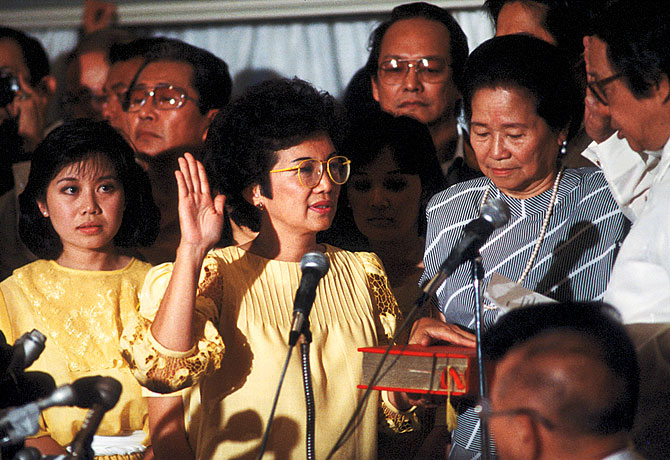On September 21, 1972, then President Ferdinand Marcos changed the course of Philippine history by declaring martial law through Proclamation 1081. This temporarily marked the end of the Philippine experiment with American-style democracy, as adapted to Philippine customs and traditions.
What Made Martial Law Possible?
Proclamation 1081 was completely legal because Article VII, Section 10, paragraph 2 of the 1935 Constitution (as amended) allowed the President to declare a state of Martial Law if the need arose. However, the Constitution did not place any limits on this power, which led to the abuses of the Marcos regime.
What Happened After Proclamation 1081?

After declaring Martial Law, President Marcos issued Letter of Instruction no. 1, which placed the media under state control. This is why people who lived under Martial Law keep defending it, since there was no alternative to the Marcos press, until the “lifting” of Martial Law allowed publications like We Forum and Malaya to proliferate.
Before Martial Law was declared, a law was enacted calling for a
Constitutional Convention to reexamine the 1935 Constitution, since it had to be revised to meet the needs of an independent nation. However, Marcos hijacked the Constitutional Convention and rewrote the proposed Constitution to create a fake parliamentary system and abolish the Vice Presidency, which would lead to problems later on. This Constitution did not even go through the proper plebiscite, for Marcos had it ratified through Citizen’s Assemblies which he created via decree.
How Did Marcos Exercise Control?
During Martial Law (1972-1981) and the Fourth Republic (1981-1986), President Marcos exercised control through the Citizen’s Assemblies, to show that the people agreed with him. In 1978, he had elections held for the Batasang Pambansa (which replaced Congress), and his allies won. He even ran for a third term in 1981, after lifting Martial Law. So, Marcos exercised control over the Filipino people using popular participation.
However, those who opposed Marcos were tortured and killed by the military, and opposition stalwarts like Ninoy Aquino were imprisoned under false charges. Also, many ordinary people were imprisoned without charges for things like cracking jokes about Marcos’ slogans, or simply being related to those who criticized Marcos.
How Did the Marcos Regime Collapse?

On January 1981, Marcos lifted Martial Law through Proclamation 2045, but he retained the power to legislate without the consent of the Batasang Pambansa. Thus, Martial Law being lifted was a sham.
The nation woke up from its lethargy when Senator Ninoy Aquino was
assassinated on the tarmac of the Manila International Airport on August 21,1983 upon his arrival from exile. Aquino was supposed to meet with Marcos to discuss the succession, since Marcos had no succession plan. In fact, Primitivo Mijares, who used to be in Marcos’ inner circle, speculated that either his wife, Imelda, or son, Bongbong, would succeed Marcos.
Following calls for his resignation, Marcos scheduled a snap presidential
election to be held in 1986 to seek a fresh mandate from the people for his
continued rule. Aquino’s widow Cory ran for President against Marcos. The official results showed that Marcos won, but there were allegations of massive electoral fraud.
Due to this, Defense Minister Juan Ponce Enrile and Philippine Constabulary Chief Fidel Ramos, abandoned Marcos and led the world-renowned phenomenon called the People Power Revolution on EDSA. The Catholic Church and the middle class joined hands to oust Marcos and replace him Ninoy’s widow, Cory Aquino, as President Marcos and his family fled to Hawaii and the Filipinos rejoiced in the streets.
The Legacy of Martial Law
After Marcos fled, the new government promulgated a new Constitution (the one currently in force) which had provisions intended to prevent the horrors of Martial Law from happening again. However, we must still be vigilant, since the Marcos family has returned to politics, and President Marcos was buried in the Heroes’ Cemetery. The dark days of Martial Law must never happen again.
Overhauled, Updated, and Revised by Daniel Francisco P. Del Rosario , 10/23/19
